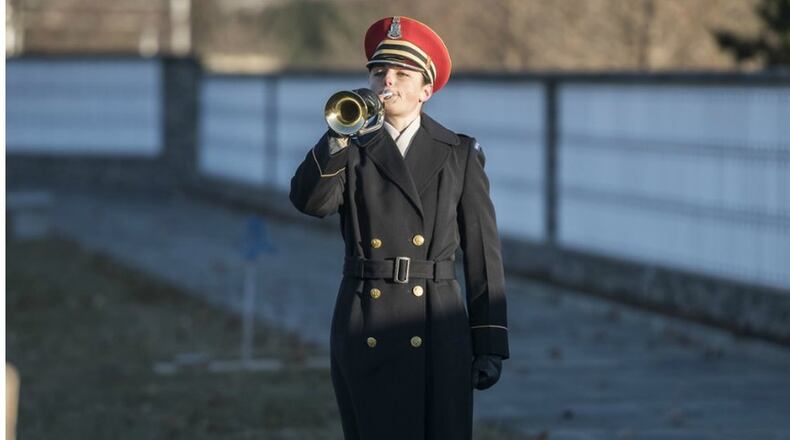Stivers, an Upper Arlington Republican who has served more than 30 years in the Ohio Army National Guard, began pushing for a resting place to inter the partial, unidentified remains of those who died while serving in the U.S. armed services.
It took six years, but the results of his efforts — the “Tomb of Remembrance” — was dedicated Wednesday at Arlington National Cemetery.
No remains were interred yet, but Stivers took comfort in knowing that cremated remains would have a dedicated resting place.
“It felt great to know that there is now a very honorable place for these remains to go,” he said.
Stivers and his staff came up with a idea for the tomb after reading the stories about the Air Force dumping incinerated partial remains of unidentified soldiers in a Virginia landfill. He said he wanted a place that could accept new remains long after he left Congress.
Stivers introduced a bill in May 2012, but more importantly he got the superintendent of Arlington Cemetery interested. The bill passed the House but was still in the Senate when the superintendent decided to move forward without congressional help.
“It wasn’t about passing a bill,” Stivers said. “It was about making it happen.”
There were more practical issues at play as well. Arlington National Cemetery is quickly running out of space. Storing cremated remains of unknown service members together, Stivers said, made more sense than burying each set of co-mingled fragments in a separate grave.
Tucked in a corner of the cemetery, not far from the columbarium — a wall holding cremated remains of other veterans — the tomb is simple and reminiscent of a cairn, or pile of rocks known as a traditional type of tomb. Underneath the cairn, a humidity-controlled vault will hold the cremated remains. Above it, those visiting can sit on a bench with a full view of the site and the graves that lie beyond it.
During a brief 10 to 15 minute ceremony, military representatives blessed the tomb with Hebrew, Catholic and Protestant prayers. They played taps. And one cemetery representative pulled Stivers aside and told him that his idea would endure for 100 or possibly 200 years to come.
Stivers was overwhelmed.
“It feels like I made a difference,” he said, “and that feels great.”
About the Author
